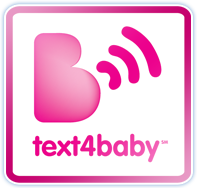The birth of a baby is a joyous occasion, and all parents wants their kids to be as healthy as possible. Newborn babies may, however, suffer from jaundice. This is treatable condition that parents shouldn’t become unduly concerned about.
What Is Jaundice?
Jaundice is a yellowing of the skin or eyes caused by a buildup of bilirubin in the baby’s blood. Bilirubin is a naturally occurring yellowish pigment in red blood cells, but too much of it can be toxic. Usually, the liver gets rid of excess bilirubin, but a baby’s liver isn’t mature enough to do so yet. Premature babies are particularly at risk for jaundice.
It usually sets in 2-4 days after a baby is born, and the whites of the eyes are one of the first areas to yellow. Over time, the skin may become discolored as well. If you suspect your baby has jaundice, press gently on his or her forehead or nose. If your baby does have this condition, the skin you pressed will look yellow. If not, it will simply look lighter for a moment before returning to its normal color. Other symptoms of jaundice may include:
- Particularly yellow skin on the arms, legs, and stomach.
- Not gaining weight or feeding properly.
- A listless or generally ill appearance; you may have trouble waking your baby.
- High-pitched crying.
Jaundice is often not serious. However, if early symptoms aren’t treated, they can lead to severe complications. Kernicterus is one example, which causes brain damage. As a result of this condition, your child could sustain hearing loss, have a permanent upward gaze, or develop athetoid cerebral palsy.
How Is Jaundice Treated?
Your pediatrician can tell if your baby has mild jaundice or a more severe case. Mild cases can go away on their own within 2-3 weeks. Otherwise, your baby will benefit from treatment to lower his or her bilirubin levels. Many doctors start jaundice treatment with phototherapy. This is a non-invasive therapy where your baby is placed under lights that emit colors on the blue-green spectrum. These aren’t ultraviolet, and a plastic shield protects your baby from any emissions.
In more severe jaundice cases, your child may undergo intravenous immunoglobulin therapy—a kind of blood transfusion. This involves transferring blood proteins that will reduce antibodies, speeding jaundice treatment. Moreover, blood transfusions involve diluting or eliminating bilirubin and antibodies from small amounts of blood before transferring them back to your baby.
If you have questions or concerns regarding an infant with jaundice, contact us for more information.
The information and content on our website should not be used as a substitute for medical treatment or advice from your doctor.




